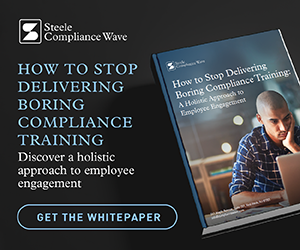10/3/16: Law firm Baker & McKenzie’s Global Compliance News provides a quick overview and link to the firm’s 2016 Global Overview of Anti-Bribery Laws Handbook. It’s one of the most useful guides to the status of anti-bribery laws and their enforcement in 47 countries. Each country has its own chapter, making the handbook easy to use, and each chapter includes such topics as facilitation payments, domestic bribery, risks associated with bribery and corruption.
Compliance Communications Blog
10/3/16: In remarks prepared for the American Bar Association Southeastern White Collar Crime Institute, Principal Deputy Assistant Attorney General David Bitkower spoke about DOJ’s “… new, broad-based and proactive approaches to emerging issues in the area of white collar crime.” He focused specifically on those approaches in the areas of health care fraud, financial fraud, FCPA, and international. The remarks are worth reading, providing insight into DOJ’s thinking and approach to enforcing the multitude of laws under its jurisdiction. Among the topics that matter to compliance professionals: DOJ’s “metrics-oriented” approach to evaluating compliance for companies seeking to resolve criminal investigations, the FCPA, and global collaboration on investigations and prosecutions.
10/3/16: A post on the FCPA Blog by Gönenç Gürkaynak, Ç. Olgu Kama and Burcu Ergün from the ELIG law firm asks an interesting question. Why do people view violations of anti-corruption laws and anti-competition laws differently? The authors provide thoughtful ideas about why the two types of illegal behavior may be perceived differently. Those ideas touch on differences of consequence, criminality and drama. The short post on FCPA Blog gives a taste of the full article (requires purchase) through a link at the bottom of the post.
Three and a half weeks ago, my Sunday afternoon started beautifully. The sun was out and my family and some friends found a softball field in a town park and took it over. My team was at bat. We weren’t winning yet, but we were going to be. There was one out, I was on 3rd prepared to score the tying run, and my daughter hit a grounder straight to her sister, the pitcher. She saw me running at top speed toward home (top speed for me maybe isn’t that fast, but it was my top speed, nonetheless), and she moved to the plate to tag me out.
Every moment I spend with Compliance Wave Members is an incredible learning opportunity. Once a company comes into Membership, I schedule a quick call to understand more about the ways these organizations communicate, get a feeling for their goals and desires for their programs, and offer up best practices and tools from our Library that I believe can start making a difference.
I always kick off these intro calls with a question: How are you currently communicating with your audience? There are so many ways to reach your employees, third parties, etc. – identifying your distribution channels and “meeting people where they are,” are both key, and something I always like to discuss early on. But what comes after you’ve identified your channels? How can you see if you've touched those employees or cut through the noise of their other communications?
These questions get harder if you are not using an LMS (or have one that you’ve struggled to use). Below are my top three alternative tracking methods, in no particular order, that current Compliance Wave Members often use as a way to report on more than just SCORM completions.


